Leejnd
Contributor
Yesterday I went out on the Pacific Star to Catalina on a Bluewater Photo charter. This was the second half of my underwater photography class with Scott Geitler, owner of Bluewater Photo. I did the three-hour classroom part a few weeks ago, and now I (and three other students) were to try out what we learned in the water, with Scott diving with us and helping with finding subjects, composing our shots, and lighting techniques. I recently purchased a new camera rig an Olympus E-PM1 mirrorless camera in the Olympus housing and I took this class in the hopes that I will learn to actually take some decent shots with it.
While it was overcast for most of the day, and the water is still a shiver-inducing 57 degrees, it was a GREAT day diving! The vis was surprisingly good there were moments when it had to be a good 50 ft. Yay!
Our first site was Emerald Bay. We were all using wide-angle lens, mine a Panasonic Lumix G Fisheye 8mm/ 3.5 lens. Our assignment was to get a shot with something interesting lit up in the foreground and a diver or something else interesting in the background. I found a sea star on a rock, and a garibaldi just happened to swim by as I was lining it up. A moment later Scott was kind enough to pose for me in the background. Im not real thrilled with the lighting on this, but I gave it the old college try, and I will keep trying to perfect the placement of my strobes. This lens is SO wide-angle that you have to pull the strobes far behind the camera.
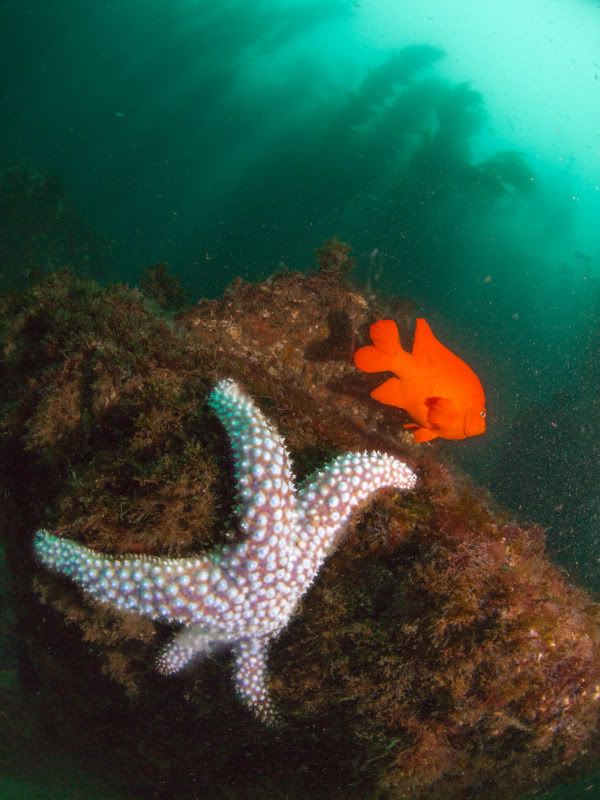

The second dive was supposed to be done with a macro lens, but unfortunately I was unable to use the one I JUST bought! You have to install a special fisheye port for the housing when using the fisheye lens, and switch to the original port for the macro lens but we couldnt get the fisheye port off the housing. Im going to have to send it in to be serviced. But I did my best to find decent macro subjects, and shot them anyway. Heres what I managed to do just remember these were taken with a huge fisheye lens, and are severely cropped. Im pretty pleased with this cameras performance. Imagine how great theyd come out with a macro lens!
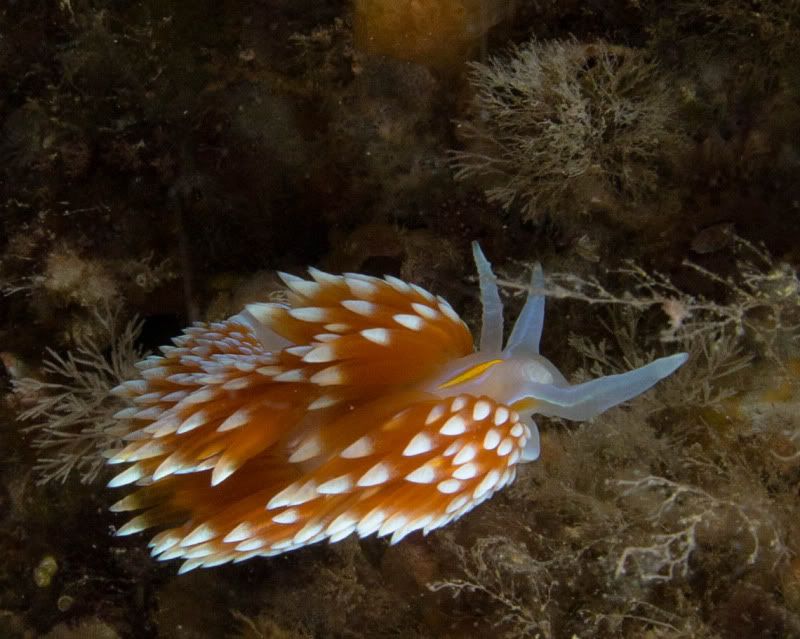
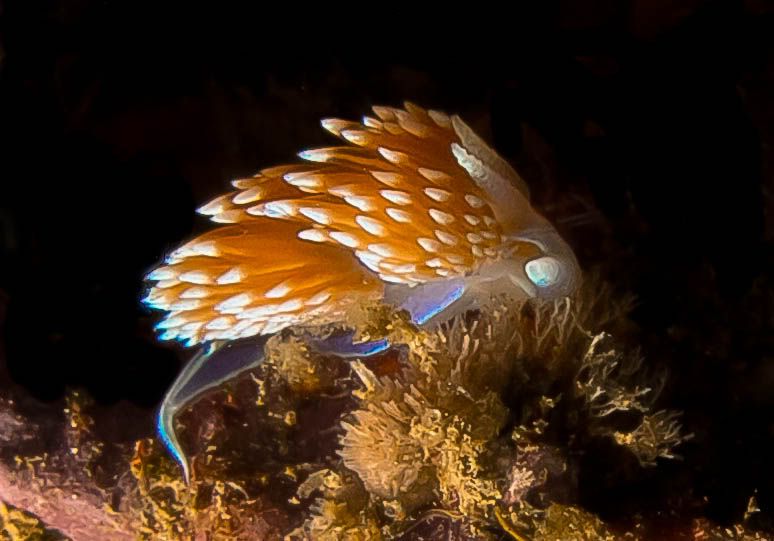
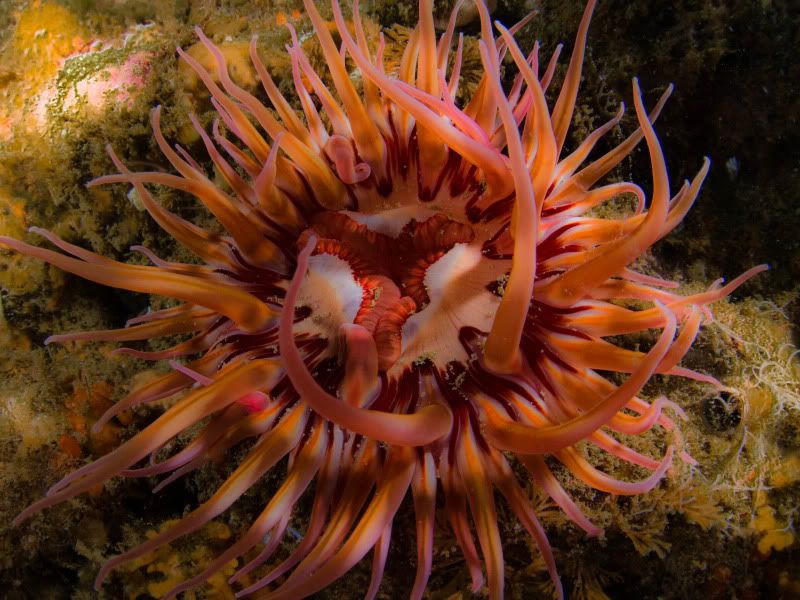
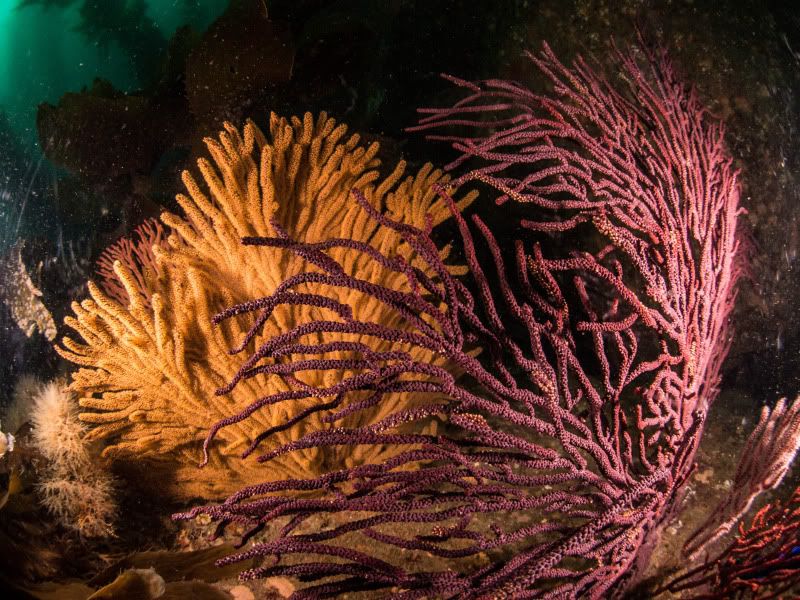
During our safety stop, I noticed that the water seemed weirdly cloudy. It took me a few moments to realize what it was a bloom of bazillions of teensy little jellies no bigger than the tip of my thumb! Perfectly formed little buggers too. Ive never seen anything like it. I was transfixed!
On the third dive we were back to using wide-angle, and we happened to spot a family of horn sharks.
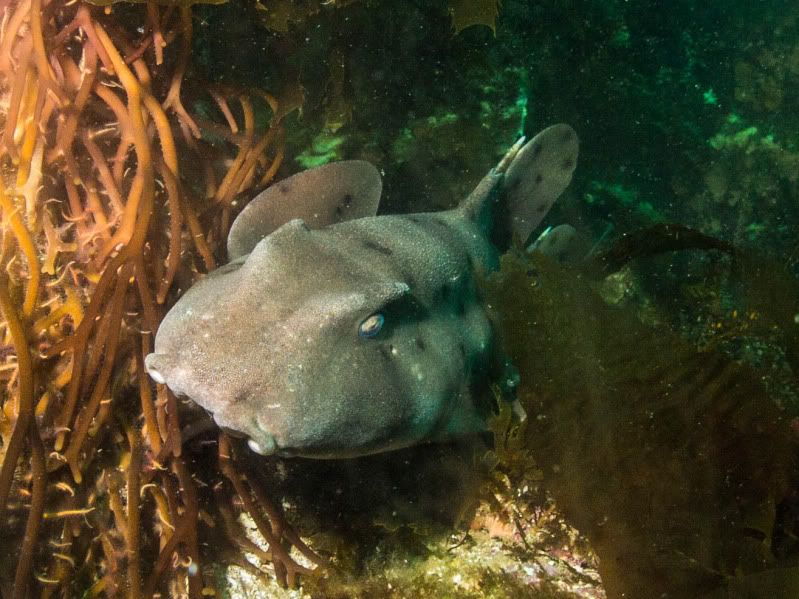

All in all it was a great day. I had a chance to put what I learned in the classroom to use in the water, with Scott there to help me. Clearly I need a lot more practice, but that just means lots more diving!
It was my first time on the Pacific Star, and Im very pleased with that boat. I boarded the night before and since only a couple others were spending the night I nabbed one of the private bunkrooms at the bow, which is the first time I had true privacy on a local dive boat. The service was great the crew would actually serve us our meals in our seats, rather than buffet style. The swim step was a bit of a challenge for me theres no actual ladder, its like a floating metal platform with horizontal bars that you have to pull down to get your knees up on it, and then claw your way onto the stern. This was probably harder for me than most because of the back surgery I had last year, but everyone else seemed to do okay with it. The deckhands were always right there to help me up, so I cant complain.
Scott did a great job in this class, both on land and in the water. I was a complete noob when it comes to photography Ive never had an interest in photography on land, but something about being underwater just makes me want to bring the memories of the amazing things I see back with me to share. I learned more in cameras, settings, lighting, and composition in my few hours with Scott than I had picked up on my own in 6 years of diving.
Thanks Scott for a great day, and for all the excellent education!
While it was overcast for most of the day, and the water is still a shiver-inducing 57 degrees, it was a GREAT day diving! The vis was surprisingly good there were moments when it had to be a good 50 ft. Yay!
Our first site was Emerald Bay. We were all using wide-angle lens, mine a Panasonic Lumix G Fisheye 8mm/ 3.5 lens. Our assignment was to get a shot with something interesting lit up in the foreground and a diver or something else interesting in the background. I found a sea star on a rock, and a garibaldi just happened to swim by as I was lining it up. A moment later Scott was kind enough to pose for me in the background. Im not real thrilled with the lighting on this, but I gave it the old college try, and I will keep trying to perfect the placement of my strobes. This lens is SO wide-angle that you have to pull the strobes far behind the camera.


The second dive was supposed to be done with a macro lens, but unfortunately I was unable to use the one I JUST bought! You have to install a special fisheye port for the housing when using the fisheye lens, and switch to the original port for the macro lens but we couldnt get the fisheye port off the housing. Im going to have to send it in to be serviced. But I did my best to find decent macro subjects, and shot them anyway. Heres what I managed to do just remember these were taken with a huge fisheye lens, and are severely cropped. Im pretty pleased with this cameras performance. Imagine how great theyd come out with a macro lens!




During our safety stop, I noticed that the water seemed weirdly cloudy. It took me a few moments to realize what it was a bloom of bazillions of teensy little jellies no bigger than the tip of my thumb! Perfectly formed little buggers too. Ive never seen anything like it. I was transfixed!
On the third dive we were back to using wide-angle, and we happened to spot a family of horn sharks.


All in all it was a great day. I had a chance to put what I learned in the classroom to use in the water, with Scott there to help me. Clearly I need a lot more practice, but that just means lots more diving!
It was my first time on the Pacific Star, and Im very pleased with that boat. I boarded the night before and since only a couple others were spending the night I nabbed one of the private bunkrooms at the bow, which is the first time I had true privacy on a local dive boat. The service was great the crew would actually serve us our meals in our seats, rather than buffet style. The swim step was a bit of a challenge for me theres no actual ladder, its like a floating metal platform with horizontal bars that you have to pull down to get your knees up on it, and then claw your way onto the stern. This was probably harder for me than most because of the back surgery I had last year, but everyone else seemed to do okay with it. The deckhands were always right there to help me up, so I cant complain.
Scott did a great job in this class, both on land and in the water. I was a complete noob when it comes to photography Ive never had an interest in photography on land, but something about being underwater just makes me want to bring the memories of the amazing things I see back with me to share. I learned more in cameras, settings, lighting, and composition in my few hours with Scott than I had picked up on my own in 6 years of diving.
Thanks Scott for a great day, and for all the excellent education!




